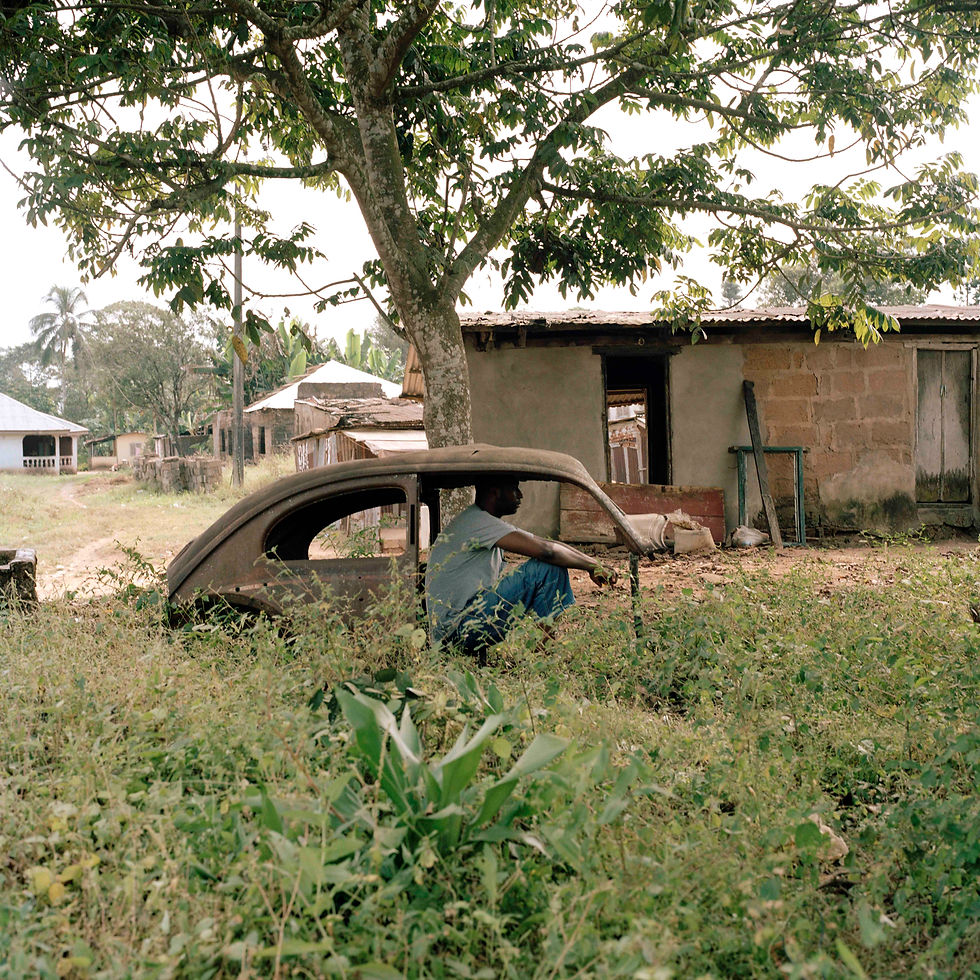Phantasms of the Non-City
JoBurg Art Fair, Johannesburg, South Africa
September 27-29, 2013
As curator of the exhibition Phantasms of the Non-City, presented as a special project of the JoBurg Art Fair in their focus on contemporary African photography, I organized an exhibition on behalf of the LagosPhoto Foundation.
Phantasms of the Non-City presents a selection from the 2013 edition of the LagosPhoto festival in Lagos, Nigeria, which examines how the development of urban centres in Africa and the technical advancement of photography have transformed our sense of place in a globally connected world.
The twenty-first century has been characterised by the rise of the mega-city; in its wake appears the phantasms of the non-city. A product of the digital revolution, the non-city cannot be defined by the spatial perimeters of an individual’s environment, but emerges in the virtual connectivity between places.
The phantasms of the non-city are born of displacement, fantasy, and an unstable sense of identity, which defy photojournalism’s quest for a truth grounded in a prior reality. The artists presented in Phantasms of the Non-City adopt photographic practices expanded by technical and performative strategies to reflect the circulation of images in our society, and their mass consumption and capacity to document personal and collective world views.
Participating Artists:
Cyrus Kabiru (Kenya), Karl Ohiri (Nigeria/UK), Uche Okpa-Iroha (Nigeria), Adeola Olagunju (Nigeria), Mouhamadou Sow (Senegal).
Cyrus Kabiru (Kenya) is best known for refashioning waste and recycled materials into various forms as a humorous critique of contemporary living within Kenya. In his ongoing project, C-Stunners, Kabiru creates and wears artistic bifocals using metal scraps and used objects. Kabiru then has himself photographed as he poses with the makeshift sunglasses. The work sits between fashion, design, performance, and photography in a comment on self- representation through commodity objects. According to Kabiru, the projects captures the sensibility and attitude of the youth generation in Nairobi, where they portray culture bling, the ingenuity and resourcefulness of the people, and the transformability of the everyday.
Karl Ohiri (Nigeria/UK) began his visual arts practice in 2007 with the documentation of his ancestral homeland of Nigeria. His series My Granddad’s Car is a collaborative project with artist Sayad Hasan, where each traveled thousands of miles to Nigeria and Pakistan in an attempt to bring their grandfathers’ cars back to the UK, aiming to park them side by side in
their country of birth. By documenting his journey and taking on performative roles for the camera, the project explores their histories, cultural heritage, and identities as a product of migration, determined to overcome boundaries in order to reconcile their ancestral pasts with their present lives.
Uche Okpa-Iroha (Nigeria) recontextualises Francis Ford Coppola’s film The Godfather in his series The Plantation Boy, where the artist inserts himself into film stills, storyboards, and staged re-enactments. By examining the relationship between the history of Western cinema and the media dynamics of race, Okpa-Iroha embraces a mesh of skewed identity that takes references from multifarious cross-sections of cultures.
Adeola Olagunju (Nigeria) explores performative aspects of photography by documenting herself in self-portraits that look at the relationship between the individual and the urban environment in Nigeria. Olagunju typically chooses decaying industrial landscapes and disregarded locations for her performative images. In Resurgence: A Manifesto, Olagunju uses the metaphor of an abandoned train station, and her own actions within it, to reflect on what she describes as sociopolitical decadence in Nigeria today.
Mouhamadou Sow (Senegal) focuses on reshaping Western misrepresentations of people and places on the African continent. In his series Télé bi, Sow documents street life in Dakar, yet uses the simple gesture of framing his scenes through the plastic border of a television screen. Sow negates the documentary tradition by suggesting that these images are destined for media subversion, and he references the photographic act and the photographer’s presence in the process of creating such stereotypical representations of Africa.
.
Phantasms of the Non-City at the JoBurg Art Fair was supported by Artlogic, Arts Alive, and the City of Johannesburg.

"My Granddad's Car"

"The Plantation Boy"

"Resurgence: A Manifesto"

"My Granddad's Car"
Selected Works
(Click To Enlarge)



"C-Stunners"

Installation Images
(Click To Enlarge)